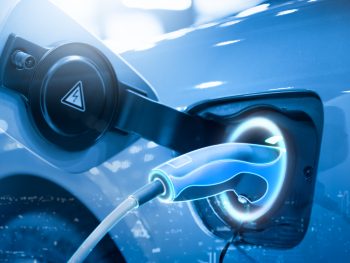90% of EV drivers use public charge points, Zap-Map research finds
Around 90% of EV drivers use public charging points regularly, but charging needs vary across a variety of needs.

The report finds that a mix of charging options is needed to make EVs accessible to as many people as possible
The research, published by Zap-Map and based on responses from over 4,300 Zap-Map users, reveals growth in, and increased usage of, all three areas of the public charging network: ‘en route’, ‘destination’ and ‘on-street’ charging.
Usage of en-route chargers – including at service stations and high-speed charging hubs and typically now ultra-rapid – has continued to increase significantly in 2022, with 37% of Zap-Map users now saying they use them, demonstrating high need.
But the study, carried out with UK law firm TLT, shows that demand is also rising for both on-street charging and consistent use of shorter sessions to top up the battery at destination charging at supermarkets and hotels.
Maria Connolly, head of future energy and real estate at TLT, said: “Our report finds that a mix of charging options is needed to make EVs accessible to as many people as possible. This presents opportunities for the public and private sectors, and will require continued government and regulatory support.”
Zap-Map also said it’s crucial that the UK’s charging infrastructure continues to expand at pace.
The charge point mapping service added: “Encouragingly, a number of factors are driving confidence from investors across all three types of charging provision, including the visible growth of the public charge point network, regulation and incentives. This is leading investors to consider funding charge point networks far more than even a year ago.”
Future network development will be data-led, not only helping improve the experience of EV drivers – by offering more accurate and up-to-date information when out and about – but also unlocking funding to build the right infrastructure in the right places.
Zap-Map co-founder & COO Melanie Shufflebotham commented: “With the UK’s public charging network expanding rapidly, this report in partnership with TLT is key to understanding how the EV landscape is changing in front of our eyes.
“Identifying and acting on current usage patterns across en-route, destination and on-street charging will be crucial for future charge point planning for investors, charge point operators, local authorities and landowners alike. This data is already being collected and can be extremely useful in understanding where the hot spots are and how the key trends are evolving.
“Looking ahead, increased provision of data will enable operators and investors across the UK to piece together an accurate picture of the UK’s charging needs and make the experience of driving an EV as seamless as possible for drivers.”
TLT’s Maria Connolly also said that drivers also need to be given the tools and information they need to plan their journeys and drive EVs with confidence.
“Many consumers still have no idea of the range of an EV, and even when they’re told it’s up to 300 miles, they think that’s not enough.
“Investor confidence is growing, and new funding models are emerging, and we can expect to see this continue and further examples of this innovation in the coming year.”
Zap-Map has also published its latest stats on the size of the UK public charging network. A total of 1,126 new EV charging devices went live on its database last month – increasing the network to 34,860 charging points, spread across 20,888 locations and with 57,613 connectors.

